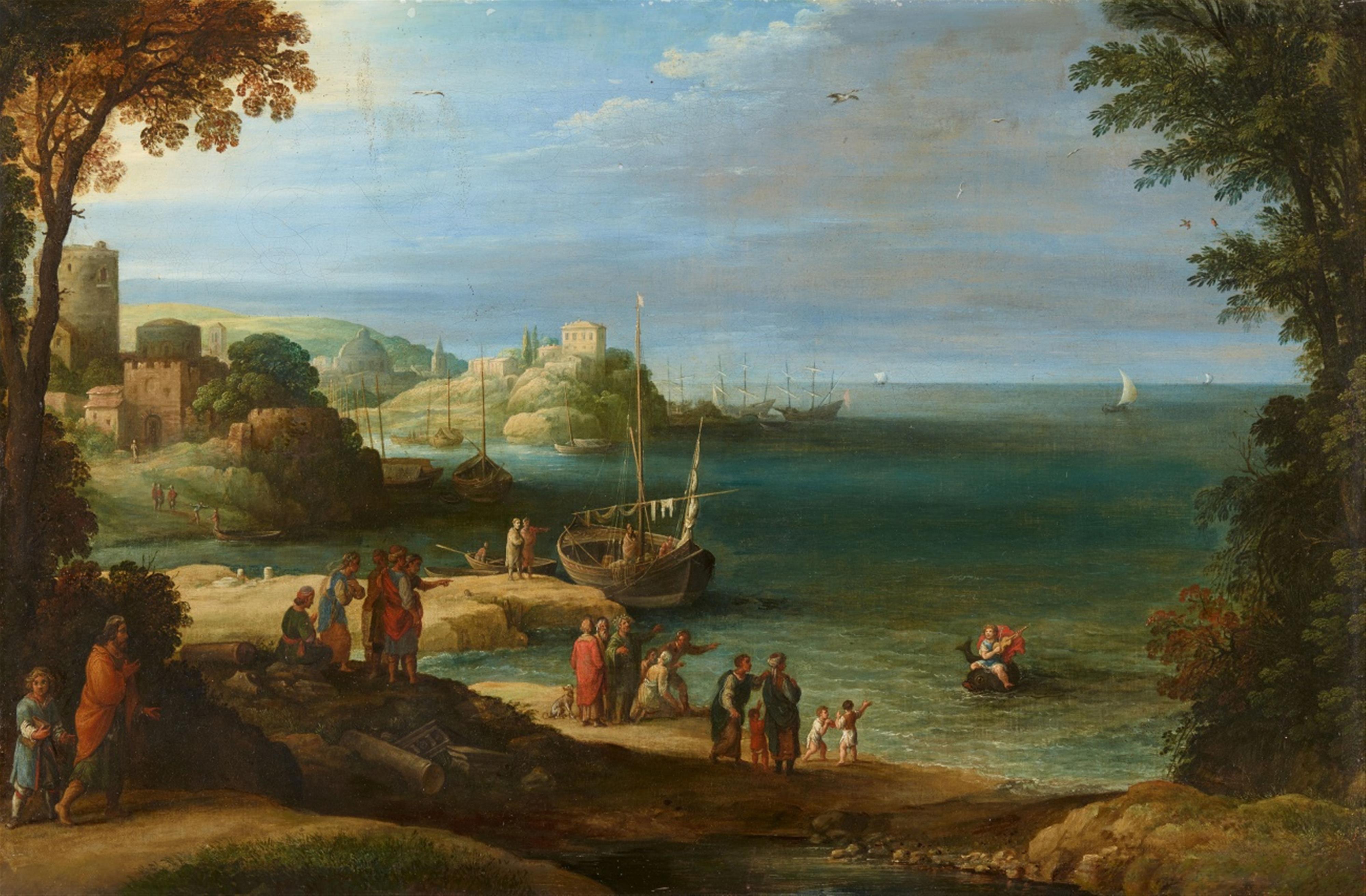Paul Bril
Arion Riding the Dolphin
Oil on canvas (relined). 50.5 x 76.5 cm.
This myth tells how the singer Arion travelled to Sicily in order to increase his fame throughout the world. There he won a singing competition and made his way home as a celebrated musician inundated with riches. However, his treasures aroused the envy of the sailors on the ship carrying him, and they plotted his death. Arion asked to be allowed to practice his art one last time, stepped out onto the deck of the ship and threw himself into the ocean after finishing his song. A dolphin that had been attracted and enchanted by his music took Arion on his back and carried him to the harbour at Cape Tainaron, from whence he travelled back to Corinth. The sailors assured King Periander of Corinth, a friend and supporter of Arion, that they had left him alive and well. However, when the king later found out the truth he had them crucified. In honour of Arion, a monument was erected at the place where he came ashore, near the temple of Poseidon, depicting him riding the dolphin.
Bril's early works, mostly small and detailed wooded landscapes, are painted entirely in the Flemish taste. However during his Italian years he increasingly drew inspiration from Italian landscape art, especially the idealized works of Annibale Carracci. Bril in turn brought a new, finely detailed style of ideal landscape to Rome, which would become of great importance to the oeuvre of many other artists in the course of the following century. He gained renown not only in Italy, but also in other countries as a sought-after painter whose works fetched high prices. Art dealers from Flanders exported many of his paintings to his homeland.
Only very few of Bril's works, like the present medium-format painting, are signed and dated. However the clear Italian influence in the motif and composition of the landscape and the balanced colour palette which replaces the high-contrast brown-green-blue Dutch colour scheme allow it to be dated within the period of around 1610/12.
We would like to thank Dr. Francesca Cappelletti for confirming the authenticity of this work by means of high-resolution photographs.
Provenance
In a West German private collection for several decades.
Literature
Cf. Cappelletti, Francesca: Paul Bril et la pittura di paesaggio a Roma 1580-1630, Rome, 2005-2006.

